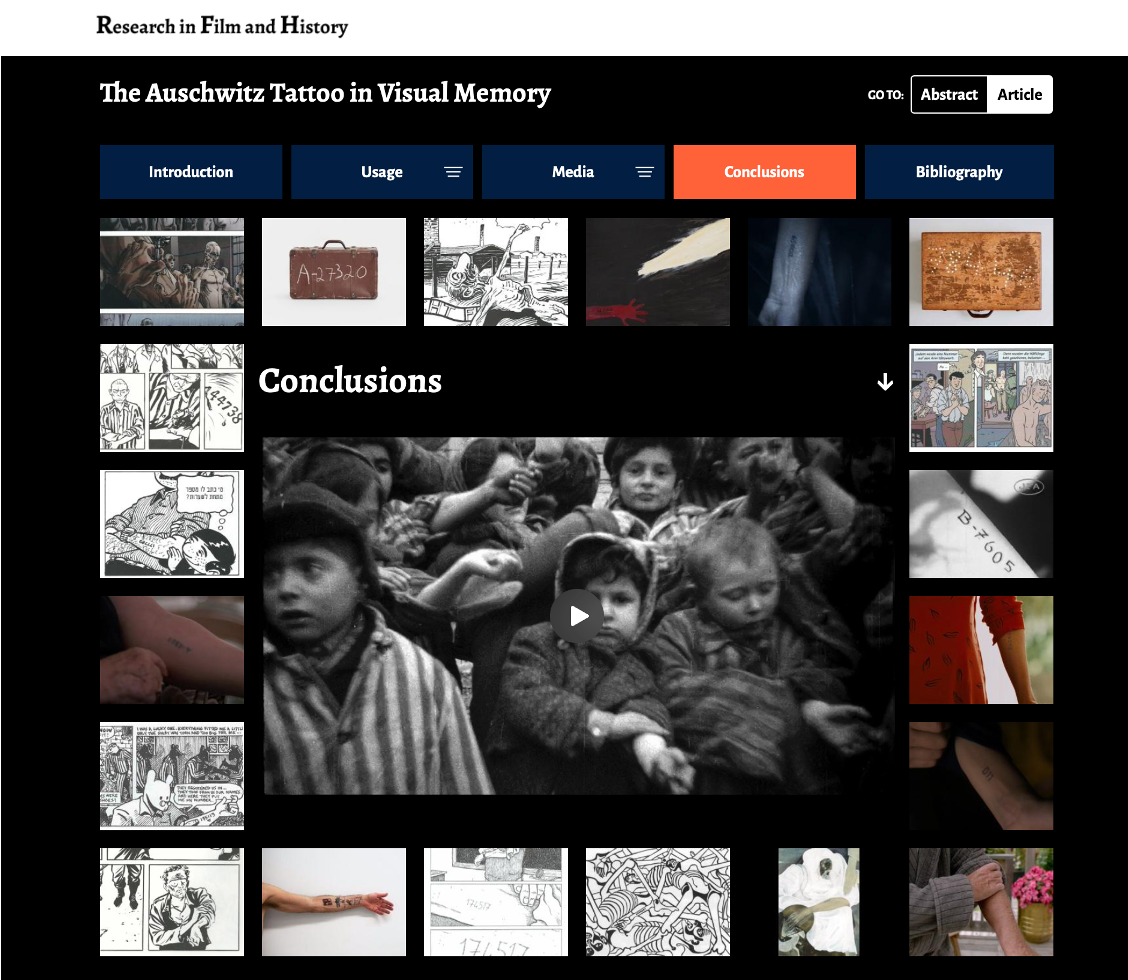The migration of images related to the visual history of the Holocaust occurs all the time. Even as one reads these lines, Holocaust images are migrating. One such image is the Number Tattoo, which has already established itself as a common visual trope of Auschwitz, or more precisely, of the figure of the survivor.
Focusing on the ‘Auschwitz Tattoo’, and in particular on a sequence showing children presenting their number tattoos to a Soviet cameraman shortly after the camp’s liberation, this interactive visual research collection analyses the migration of this visual trope into popular culture: its historical origin, its iconisation process, and the reasons it has become such a popular object of visual migration. Emphasizing the movement of the trope between a representative selection of cultural products with the help of annotated images and sequences, as well as through explorative audiovisual essays, this collection reveals a network of visual relations that exist between the various uses of the image and offers new options for curating these relations by digital means.
The interactive article has an open non-linear structure. It is focused on four video essays that outline current research on the presented audiovisual materials. By clicking on the previews, the user can get detailed information about the shown audiovisual materials.

